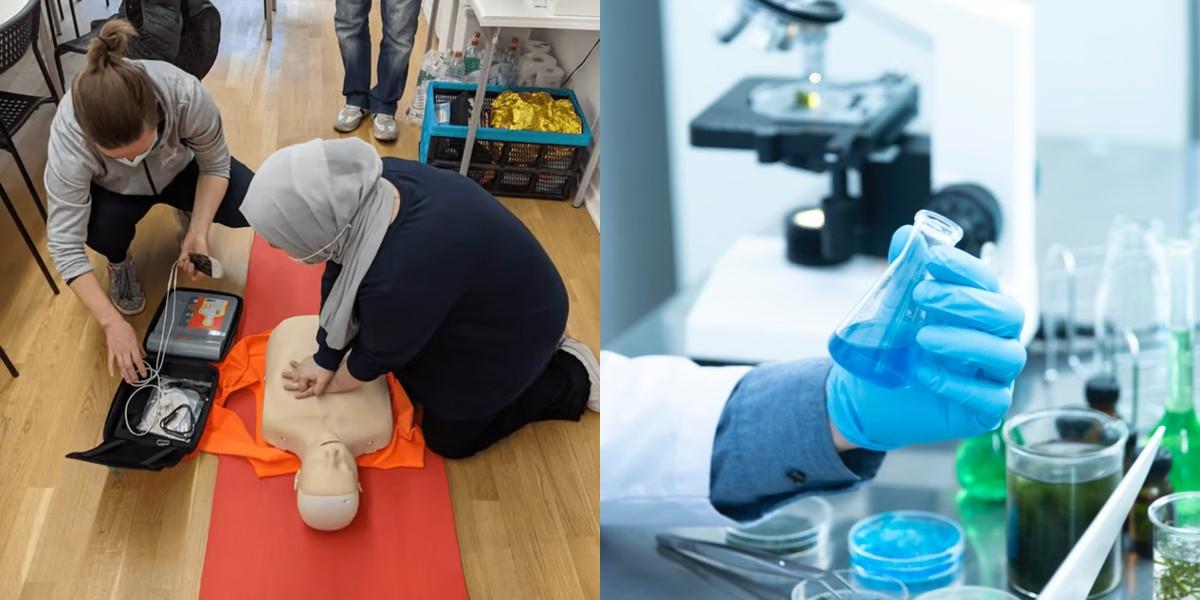CPR-BLS vs Sterile Processing Technician

Key Points:
- CPR-BLS providers give emergency care; Sterile Processing Technicians clean and sterilize medical equipment.
- CPR-BLS pay is often lower than Sterile Processing Technicians.
- CPR-BLS jobs are more common than Sterile Processing Technician jobs.
- CPR-BLS training is often online, while Sterile Processing Technician training is usually in-person.
- CPR-BLS training is cheaper and faster than Sterile Processing Technician training.
When it comes to choosing a career in the medical field, there are many options to consider. Two popular choices are becoming a CPR-BLS (Basic Life Support) provider or a Sterile Processing Technician. While both roles are important in the healthcare system, they have distinct differences in job responsibilities, education and training, and career outlook. In this blog post, we will explore the similarities and differences between a CPR-BLS and a Sterile Processing Technician to help you make an informed decision about which path is right for you.
CPR-BLS vs Sterile Processing Technician: Career Outlook and Salary
CPR-BLS
- The demand for CPR-BLS providers is expected to remain steady, as emergencies can happen at any time.
- CPR-BLS providers can find employment in hospitals, clinics, emergency medical services, and other healthcare settings.
- The median annual wage for EMTs and paramedics, which includes CPR-BLS providers, was $35,400 in May 2020, according to the Bureau of Labor Statistics.
Sterile Processing Technician
- The demand for Sterile Processing Technicians is projected to grow as the healthcare industry continues to expand.
- Sterile Processing Technicians primarily work in hospitals, surgical centers, and other healthcare facilities.
- The median annual wage for Sterile Processing Technicians was $37,040 in May 2020, according to the Bureau of Labor Statistics.
Final Thoughts
Both CPR-BLS providers and Sterile Processing Technicians play vital roles in the healthcare system. While CPR-BLS providers focus on emergency medical care and direct patient interaction, Sterile Processing Technicians ensure the safety of patients by sterilizing and preparing medical instruments.
If you thrive in high-pressure situations and enjoy providing immediate care to individuals in need, a career as a CPR-BLS provider may be the right choice for you. On the other hand, if you have attention to detail and a strong commitment to patient safety, becoming a Sterile Processing Technician could be a rewarding career path.
Consider your interests, skills, and career goals when deciding between these two healthcare professions. Both careers offer opportunities for growth and advancement, and both contribute to the overall well-being of patients in the healthcare system.
Dreambound ensures accessibility to its educational programs by offering them in diverse locations. For a detailed exploration of the exciting opportunities within these two vocations, we encourage you to visit:

Vduani Martinez is a part of the Growth team at Dreambound. She creates and fixes workflows and automation to guarantee seamless operations. On top of that, she manages databases to ensure all information is up to date. Vduani is a licensed Electronics Engineer who loves coffee and is a travel enthusiast. Out of the office, she enjoys going on road trips and discovering new cafes and restaurants.



